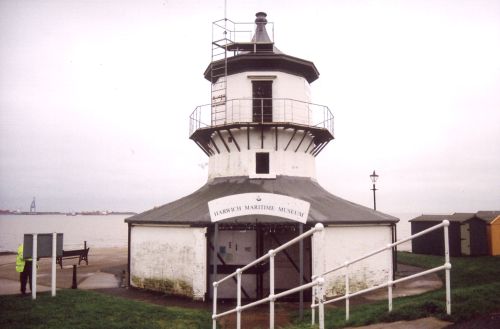England's Historic Seascapes: Southwold to Clacton
Oxford Archaeology (South), 2007. https://doi.org/10.5284/1000277. How to cite using this DOI
Data copyright © Historic England unless otherwise stated
This work is licensed under the ADS Terms of Use and Access.
Primary contact
Oxford Archaeology (South)
Janus House
Osney Mead
Oxford
OX2 0ES
UK
Tel: 01865 263800
Fax: 01865 793496
Resource identifiers
- ADS Collection: 746
- ALSF Project Number: 4729
- DOI:https://doi.org/10.5284/1000277
- How to cite using this DOI
England's Historic Seascapes:
Southwold to Clacton
ALSF Project Number 4729
Oxford Archaeology, 2007
Harwich Area
Lighthouses
Harwich low lighthouse was built by John Rennie the Elder in 1818. The structure consists of a tapering 10-sided shaft made of yellow stock bricks which are currently painted white. It is similar in detail to Harwich high lighthouse but the character has changed due to the painting of the materials that clad the lighthouse. It now contains Harwich maritime museum which opens in the spring and summer months.
The Dovercourt Lighthouses are two iron framed lighthouses set about 200 metres apart at either end of a stone causeway which projects into Dovercourt Bay from the sea wall opposite the Phoenix Hotel on Marine Parade. The inner lighthouse stands to a height of 15 metres.

Caption: View of Harwich low lighthouse
Photo courtesy: Oxford Archaeology

Caption: View of Harwich high lighthouse
Photo courtesy: Oxford Archaeology








